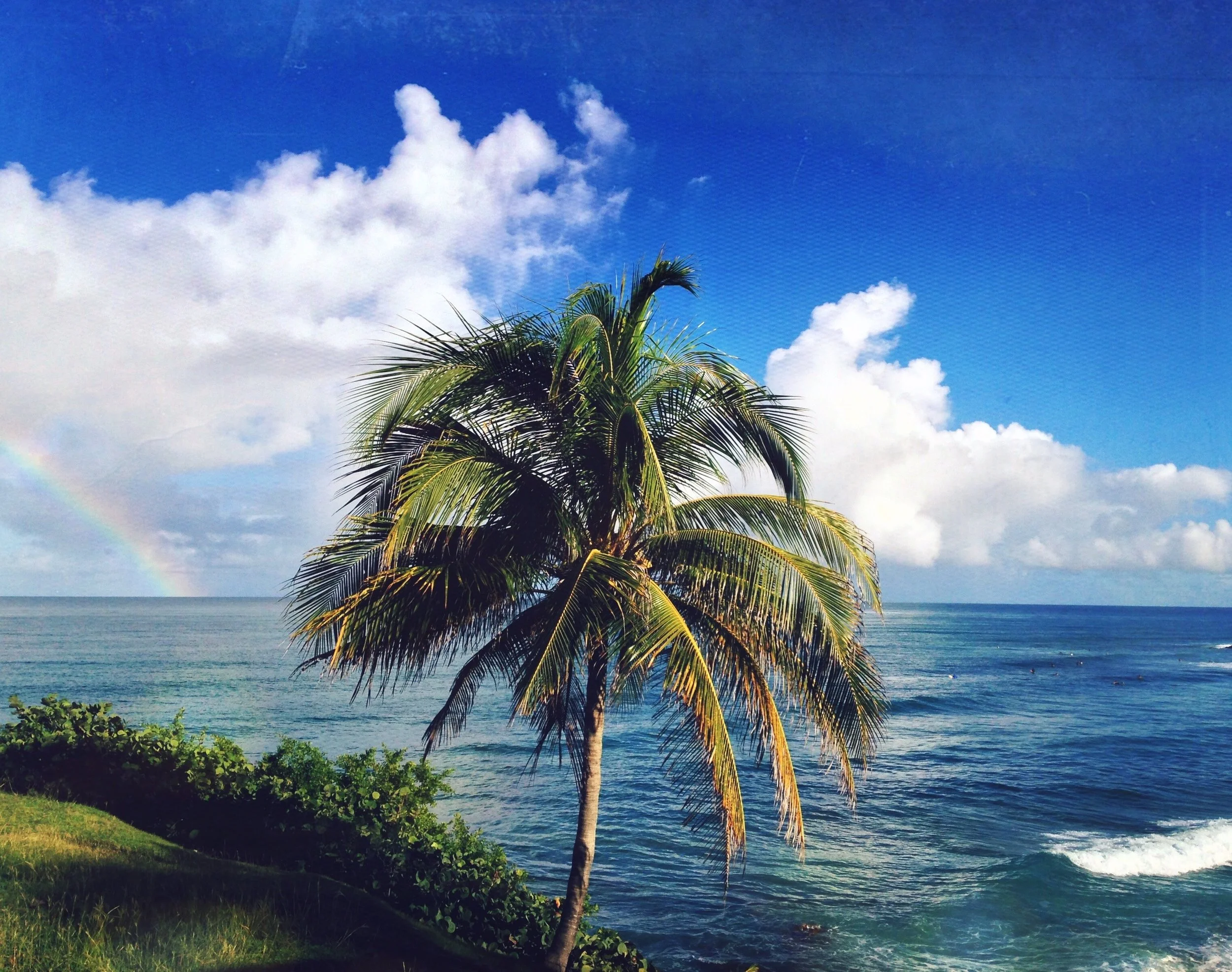As many of you know, the Summer Solstice is this Friday, June 21st, and here in the northern hemisphere it means that it’s time to officially welcome summer and her long, hot days and short, but sweet nights. And whether you’re welcoming summer or winter, it's a day of significance across many cultures, religions, and groups of people, from farmers to yogis. And the past few years, ever since my first Solstice 108 with friend + teacher Rose Tan, we've met at the Lighthouse here in Rincon to join together for 108 Sun Salutations to honor this transitional day.
But why do we do this?? Well, here is some insight below:
WHY 108??
The number 108 is a sacred number in both Hinduism and yoga. There are many theories as to why the number holds spiritual significance, but in this particular practice of the Solstice 108, for me at least: It represents a physical ritual, like a yoga mala, in which I’m intentionally moving through my salutations, like I would count on the beads of a mala, to offer my gratitude for the sunlight, my body, and my planet and to set a prayer or intention or mantra for this new season. Traditional malas, or garlands of prayer beads, come as a string of 108 beads - plus one guru bead which the other beads turn like planets around the sun. A mala is used for counting as you repeat a sacred mantra, similar to the Catholic rosary. So the 108 sun salutations, to me, are like prayers through motion.
But, like I said, there are many other theories about the significance of the number 108. Here are some below:
Renowned mathematicians of Vedic culture viewed 108 as a number of the wholeness of existence
This number also connects the Sun, Moon and Earth - the average distance of the sun and the moon to the Earth 108x their respective diameters - such phenomena have given rise to many examples of ritual significance
The diameter of the sun is roughly 108x the diameter of the Earth
According to yogic tradition there are 108 pithas, or sacred sites, around India
There are 108 Upanishads, a part of the Vedas, ancient Sanskrit texts that contain some of the central philosophical concepts and ideas of Hinduism, some of which are shared with religious traditions like Buddhism and Jainism. There are also said to be 108 marma points, or sacred places of the body
The chakras are the intersections of energy lines and there are said to be a total of 108 energy lines converging to form the heart chakra. One of them, sushumna leads to the crown chakra, and is said to be the path of Self-realization
Some say there are 108 feelings, with 36 related to the past, 36 related to the present, and 36 related to the future
There are 54 letters in the Sanskrit alphabet. Each has a masculine and a feminine, Shiva and Shakti, 54x2=108
9x12=108; 9 + 12 are considered to have spiritual significance in many traditions, it also works as (1+0+8) x 12 = 108
In astrology there are 12 houses and 9 planets, 12x9=108
In Pythagorean, the nine is the limit of all numbers. 0 to 9 is all you need to make up an infinite amount of numbers
Sources: https://www.elephantjournal.com/2010/09/meaning_behind_108/ + https://www.yogajournal.com/yoga-101/the-number-108
AND WHAT ABOUT THE SUMMER SOLSTICE?
I really love this excerpt from a Huffington Post article, “The Spiritual Meaning of the Summer Solstice,” by Grove Harris:
Summer Solstice, the longest day of the year, the shortest night, and a tipping point: from here on out the days get shorter and the nights get longer. The solstice, sometimes called midsummer because by now farmers have long done their planting, is technically the first day of summer. It both ushers in the warmest season, and reminds that the season is short, slipping away day by day. For those who revere nature, summer solstice may be celebrated by a bonfire, and staying up to greet the dawn….
Celebration may be among a broader spectrum of people, such as the 35,000 who gathered at Stonehenge last year. BBC’s coverage of that event included an interview “with those who appreciate the solstice the most: ‘We believe it is very important for people to move with the cycles of nature, and actually feel them. If you get up early in the morning and you watch that special sunrise, you’ve been a part of it. The rest of the year is shaped by that. And we think it’s a really healthy thing to do, and a very spiritual thing to do.’” …
People attune themselves to the rhythms of the natural world and invite the seasons of waxing and waning, of birth, growth, death and renewal to reverberate more consciously in their lives...
Honoring the solstice can remind us just how precious each day and season is, because the truth of its passing away is also acknowledged. Gifts need to be appreciated, not taken for granted. Some will use their ritual to raise energy for healing, for re-aligning and redressing environmental wrongs, or for strengthening the sense of being part of nature, not set apart and individual, but interconnected in a larger whole, including the past, present and future. Such is the power of participating in the turning of the wheel of the year.
AND THE SUN SALUTATIONS?
While there are many different variations of Sun Salutations, or Surya Namaskar, the intention of the sequence is what keeps them all the same. Physically one sequence of postures, or asana, may look different from the next, but the common denominator is that they are all a form of prayer or meditation in movement. The sun salutation sequence does literally that: It salutes the sun, giving thanks to its life force energy, connecting that to our internal life force energy, recognizing that within we are all the same. The physical postures are the surface layers, and when we bring intention or pray into our movements, that’s what allows us to dive deep, to break through the things that are holding us back, and that’s what shows us where we need to lean in and where we need to let go - especially appropriate as we step into the summer months.
For more about the tradition, mythology, styles, and benefits of surya namaskar, check out this Yoga Journal article here.
WHAT MAKES IT A SACRED RITUAL?
One thing to remember - the practice of 108 sun salutations is not about doing each and every sun salutation perfectly. Because too much rigidity usually doesn’t best serve ourselves. The physical practice, the movement through the asana, is the facilitator to help you tune into your self, your rhythm, and this sacred practice on a deeper frequency. Any activity (yes even washing the dishes, folding the laundry, drinking your coffee) can become a sacred ritual as long as you hold space for it to be. So never let the idea of doing 108 sun salutations intimidate you, because it’s not really so much about the physical practice but more about the intention that you bring and that space that you hold for yourself and others.
AND THAT BRINGS ME TO COMMUNITY SUPPORT!
While we will be moving through our own practice at our own space, just by breathing and showing up you will be holding space in the way of nonverbal support to those around you and even those participating in 108 sun salutations across the globe. It’s a practice that reminds us that none of us or perfect, we’ll never be perfect, and we are all working through or maybe just recently overcome something. This practice of 108 sun salutations teaches us more about compassion, empathy, patience. People all over the world honor this tradition and have done so for a really long time. In my opinion, this creates connection on a global + universal level, human to human, human to nature, human to planet, human to both moon + sun. Showing up for yourself is a snowball effect that allows you to show up better for others. I truly believe that this practice elevates the vibration of the world.
SO IF YOU'RE IN RINCON, JOIN ME!
I’ll be at the Lighthouse of Rincon (between Maria’s and Domes Beach) at 6:30am Friday morning (6/21). I will lead the group through an opening meditation and through the first round of sun salutes. After that, you will be on your own. No pressure. No right or wrong. Just open, present, intentional, and respectful. Plan for about an hour and a half, or just join us for as long as you can.
And while tomorrow marks the solstice, it also happens to be International Yoga Day! A day to celebrate the gift that is the practice of yoga.





